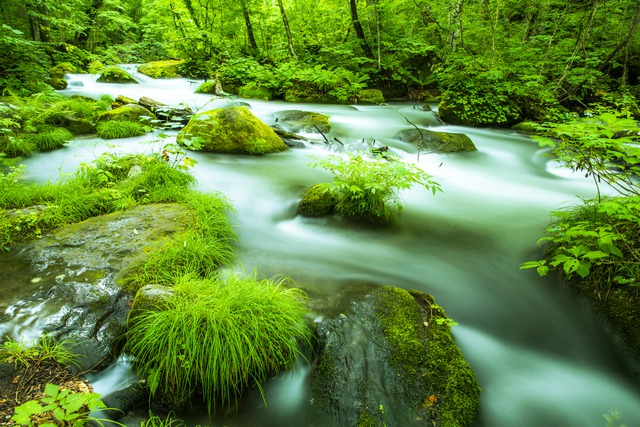
Easily Accessible From Tokyo! 5 Places to Visit Using the Tohoku Shinkansen
The Tohoku region is filled with charm thanks to its unique culture and impressive natural scenery, featuring beautiful coastlines and green, deep mountain ranges. By using the Tohoku shinkansen (bullet train), Tohoku can be easily accessed from Tokyo. Here are 5 recommended spots to visit using the Tohoku shinkansen!
This post may contain affiliate links. If you buy through them, we may earn a commission at no additional cost to you.
1. Sendai Castle Site (Sendai Station)
Sendai Castle, also known as Aoba Castle, is the largest castle in the country. It was constructed in 1610 by Date Masamune (1567 - 1636), who wielded tremendous power in the area. Since then, the castle has served the feudal lords of Sendai for generations. The castle ruins have now been made open to the public as Aobayama Park, offering a view that overlooks Sendai and the Pacific Ocean. The original building no longer exists, but an enormous stone wall and a reconstruction of the castle\'s main gate are reminders of what the castle once looked like. Date Masamune\'s statue sits in the park and is a symbol of Sendai. Visitors can enjoy seeing the statue lit up from sunset to 11:00 pm, together with the nighttime view of Sendai.


2. Matsushima (Sendai Station)
The city of Matsushima in the central eastern area of Miyagi Prefecture is known as “Matsushima Bay”. It is located about 30 minutes away from Sendai Station on the JR Senseki Line. Along with Miyajima in Hiroshima and Amanohashidate in Kyoto Prefecture, it is counted as one of Japan\'s top three scenic spots and is famous as one of Japan\'s top tourist attractions. More than 260 islands are woven together in a unique and beautiful landscape, which has been painted in numerous works of art since ancient times. Many tourists have been impressed by the great panoramic view of Matsushima against the background of the rising or setting sun and the moonlit sky.


3. Naruko Hot Spring Village (Furukawa Station)
Naruko Hot Spring Village is the collective name given to five hot spring areas located in the northern part of Miyagi Prefecture, which is surrounded by magnificent nature. With more than 370 water sources, most of the accommodation facilities and communal baths use water from these sources. Plus, 9 of the 11 varieties of natural hot spring that exist in Japan flow through this area, including sulphur, chloride, and hydrogen carbonate. The most recommended within the area is Naruko Hot Spring. With more than 1,000 years of history, this is the largest of the areas within Naruko Hot Spring Village and also has the largest amount of water. The rising steam from the hot water, narrow alleys, and souvenir shops create a nostalgic atmosphere. With fresh green leaves in spring, crimson foliage in the fall, and ski facilities in winter, there are various ways to enjoy the area all year round, making this an appealing place to visit.

4. Hiraizumi (Ichinoseki Station)
During the late Heian period (794 - 1185) in Hiraizumi of Iwate Prefecture, various temples and gardens were built based on “Pure Land Buddhism”, which is a Buddhist concept that preaches about being reborn in a “pure land” after death. These buildings and ruins are still highly valued masterpieces and are registered as World Heritage Sites. The most famous among them is Chuson-ji Temple. Containing more than 3,000 national treasures and important cultural assets, this temple is said to be a treasure trove of art from the Heian period. Covered in gold leaves both inside and out, the Konjiki-do (Golden Hall) is also a must-see.
Chuson-ji Temple Entrance Fee: Adults 800 JPY, High School Students 500 JPY, Junior High School Students 300 JPY, Elementary School Students 200 JPY

5. Oirase Gorge (Hachinohe Station)
A section of Oirase Stream flows from Lake Towada into the Pacific Ocean, creating a mountain stream roughly 14 km long. This area has been designated as a place of special scenic beauty and a Special Natural Monument of Japan, with its beauty weaved together by rapids and waterfalls, an abundance of strangely shaped rocks, and the backdrop of a verdant forest. The roads and paths that follow the stream are maintained so that everyone can enjoy it. The best time to visit is either from May to June for the fresh green leaves, or October for the autumn foliage. Enjoy the natural beauty of the seasons while listening to the flow of the mountain stream.

There are also many other recommended spots at each stop of the Tohoku shinkansen. If you are thinking about sightseeing in the Tohoku region, make sure to do plenty of research by using this as a guide.
The information in this article is accurate at the time of publication.




